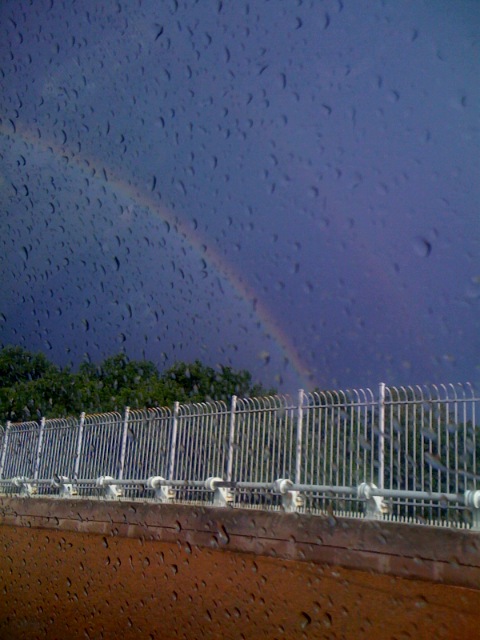
Because we need to get more pleasure and gardening in our politics....check out Johns recent article.
Mushroom!
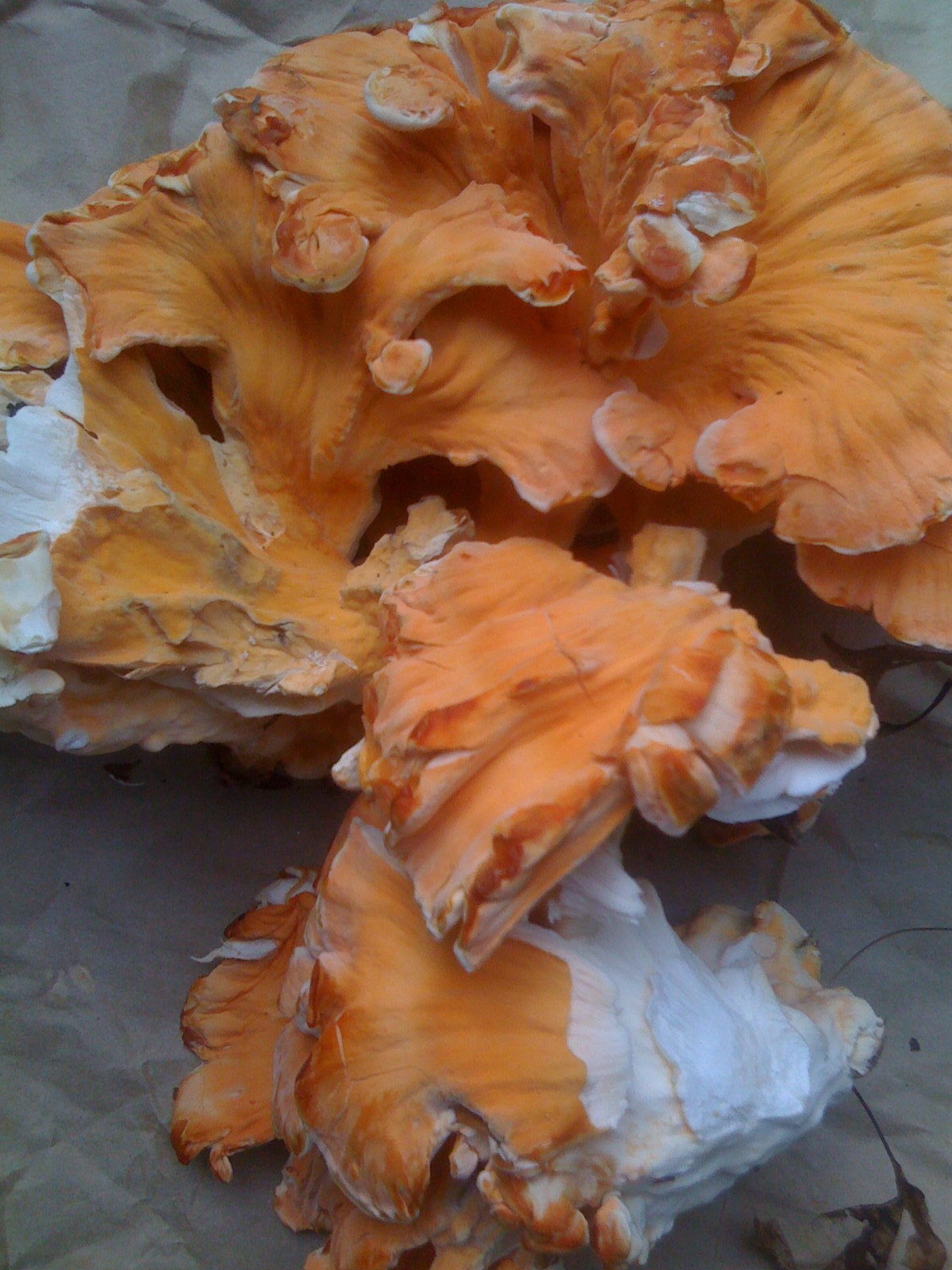
Recently we were gifted this large chicken of the woods mushroom that was found in suburban Washington, DC. Last fall I found lots of wild mushrooms in Rock Creek Park within the city. Varieties included chicken of the woods, oyster and puff ball.
Over the last few days we ate roasted mushroom for breakfast, lunch, dinner and shared some with friends. Some of what we ate-
mushroom and scrambled tofu
roasted potato, French bean and mushroom salad
mushroom lettuce and tomato sandwich
mushroom curry
Check out mycologist Paul Stamets lecture on TED about how mushrooms can save the world.
Early summer I heard Li Edelkoort give a autumn and winter 2009-2010 trend presentation based on mushrooms as an influence on all aspects of design from architecture to fashion.
For more wild mushroom information check out The Journal of Wild Mushrooming.
Austin Texas
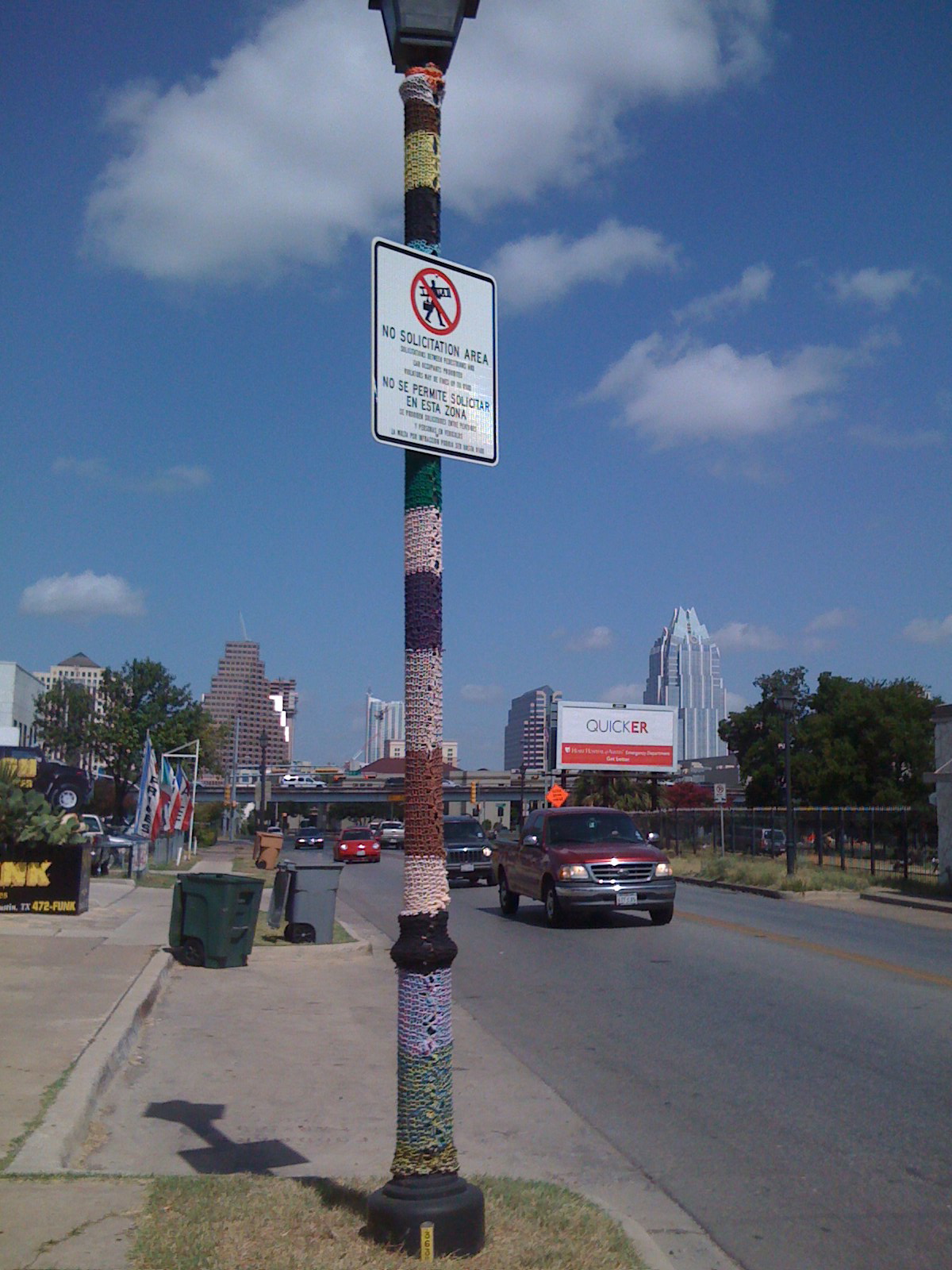
 First visit to Austin- a few of my favorite things
First visit to Austin- a few of my favorite things
-there is someone in the city who does guerrilla crochet
-pickle snowcone with hot chili
-small buisnesses everywhere that appear to be supported by the community and seem to be dedicated to supporting the community, articulated in part by the note on the menu of Blue Dahlia
-sustainable living seems to be deeply incorporated into daily life regardless of neighborhood and income level, this is supported by all sorts of things like the city in giving away free rain barrels, excellent cheap to free public transportation, organizations like The Rhizome Collective...
-seemingly endless sources for excellent affordable food with vegan options, a couple favorites tacos quick cheap and excellent for breakfast lunch or dinner, vegan diner with traditional herbalist on site, cupcakes
-inspired garden stores with excellent selections of plants and containers including Big Red Sun
and Gardens
I look forward to returning and exploring more!
Two Exhibits

 Eero Saarinin and Buckminster Fuller
Eero Saarinin and Buckminster Fuller
Interdisciplinary Approaches
In the last couple weeks I visited two museum exhibitions: Eero Saarinen, at the National Building Museum in DC, and Buckminster Fuller, at theWhitney Museum in New York, (both these link to lots of information about both individuals works).
Both shows linger with me and seem relevant to everyday life. The products of their work are quite different: Saarinen known for his design of the St. Louis arch, innovative advances in both corporate building as well as airports and chairs made in collaboration with Eames, juxtaposed Fuller known for geodesic domes, dymaxion car (only developed to prototype stage) and the dymaxion map (shows the earths continents with minimum distortion when on a flat surface).
Eero Saarinen, "Each object should be designed in its next largest context - a chair in a room, a room in a house, a house in an environment, an environment in a city plan."… “Nothing exists in isolation. Everything is connected.”
Buckminster Fuller, defined synergy as "the behavior of whole systems not implicit in any of the behavioral characteristics of any of the parts of the system when those parts are considered only separately," and synergetics as the "exploratory strategy of starting with the whole." He adopted "synergetics" as the name for the experiential mathematics he developed and demonstrated using numerous models.
My draw to their work lies in the similarity of an interdisciplinary approach which results in a practice of utilizing innovative materials and methods. For one project Saarinen developed a neoprene gasket for the windows in another he experimented with Cor-Ten steel which previously had been used only for railroads. Fuller advocated the necessity of recycling materials and looking to renewable sources for energy. My interest lies in that they approached individual projects as opportunities to try something new. This practice naturally incorporates ecology not as an end goal but as an essential component….something I strive for in my everyday practices.
Visiting Path Valley
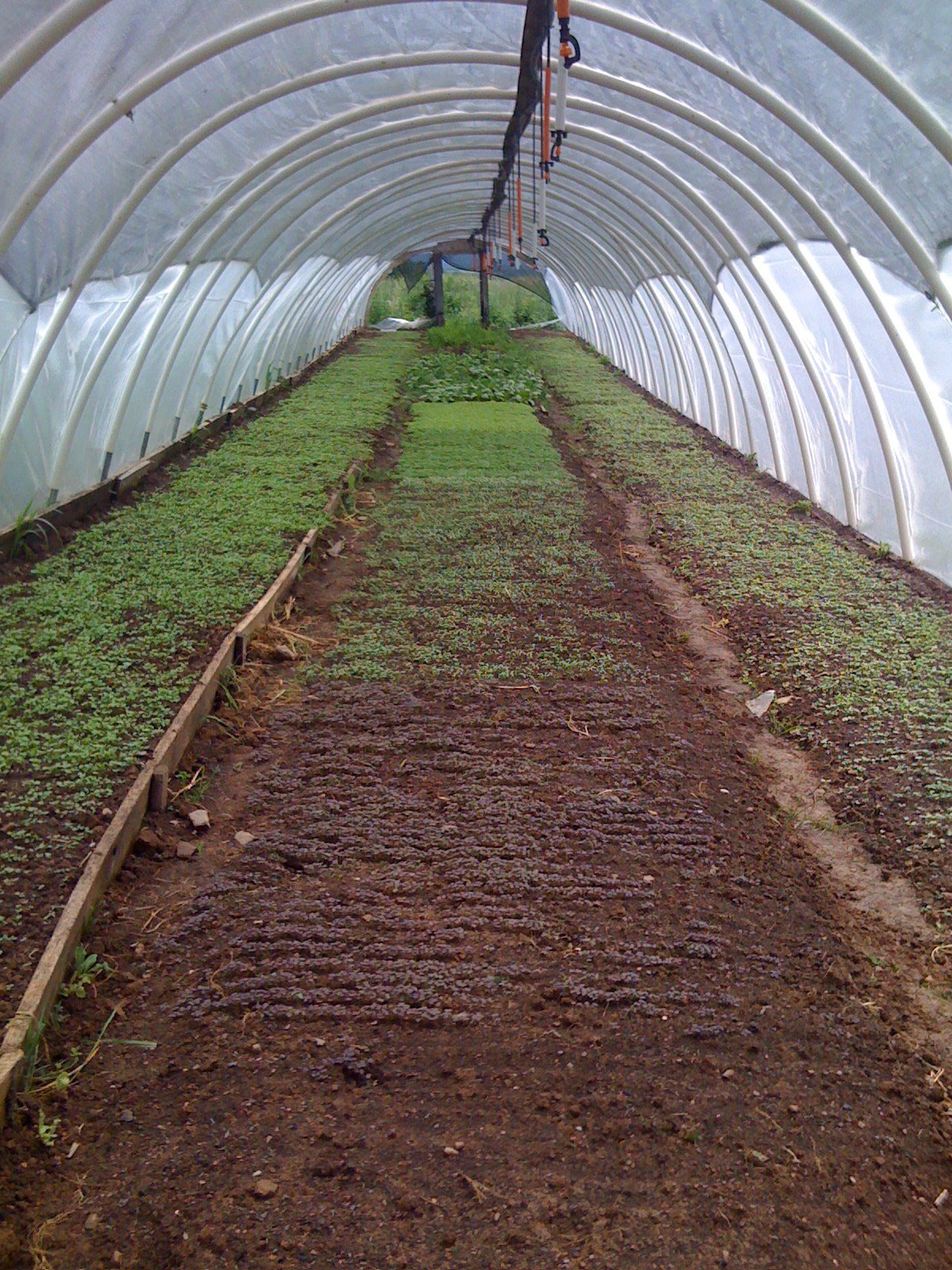
In the early days of Rupperts there were only a few purveyors delivering local produce to restaurants…there was no Dupont Farmers Market….
Shortly after opening we got connected with a small company called Organics that delivered organic produce from a variety of Amish farms in Pennsylvania. Immediately it was obvious that the produce coming from Organics was exceptional…. the perfect baby greens, uniform fennel, young leeks, tiny turnips and beets…..
After Rupperts at other restaurants where I have consulted the first purveyor that I suggest is Organics which somewhere along the way changed its name to Path Valley. During our recent visit we learned that the founder got out of the business and created a farmers cooperative which is the way it is now operated.
Anyway, a few weeks ago it suddenly seemed pressing to go visit the farms that this produce we had been enjoying for years was coming from. I called the person who coordinates the orders for restaurants and asked if it would be possible to come up for a visit. She said that she would ask around when she went to visit the member farmers that day.
She arranged for us to visit three different farms. Martin-Lane and I drove about two and a half hours from DC and arrived in a picturesque valley between small mountains. There were horse drawn buggies sharing the road with cars.
The farms looked like very well maintained large kitchen gardens. Row after row of picture perfect varieties of lettuce, tomatoes, herbs......This is possible since all members of the large families work cooperatively on the land. As anyone who has planted even the smallest garden knows it takes lots of consistent work to keep it in good condition. Especially some crops like baby lettuces need daily weeding and attention.
The land is used very intensively. I have read that organic farming practices are symbiotic with the Amish way of life which believes in nurturing and supporting the community as a whole. The Amish concept of community includes people, land and other living things. Excellent soil is maintained through hand tilling, composting and crop rotation. All the work is done by hand and with the occasional help of horses.
At each of the traditional Amish farms we met friendly families and saw impeccable fields and greenhouses. We shared ideas about growing things, insects and food. We saw the hand picking and sorting of lettuce that is the secret behind the truly spectacular greens that we have eaten over the years. The compete focus and immersion in the practice of farming was astounding, beautiful and inspirational.
The experience was other worldly and I am anxious to go back. Upon leaving one of the farms I asked if we could come up for a day and weed with them. They laughed at us and said we were welcome.
Rainbow over DC...
Epicurus (341–270 B.C.) writes in his letter to Pythocles:
The rainbow arises when the sun shines upon humid air; or again by a certain peculiar blending of light with air, which will cause either all the distinctive qualities of these colors or else some of them belonging to a single kind, and from the reflection of this light the air all around will be colored as we see it to be, as the sun shines upon its parts. The circular shape which it assumes is due to the fact that the distance of every point is perceived by our sight to be equal; or it may be because, the atoms in the air or in the clouds and deriving from the sun having been thus united, the aggregate of them presents a sort of roundness
Conscious Party
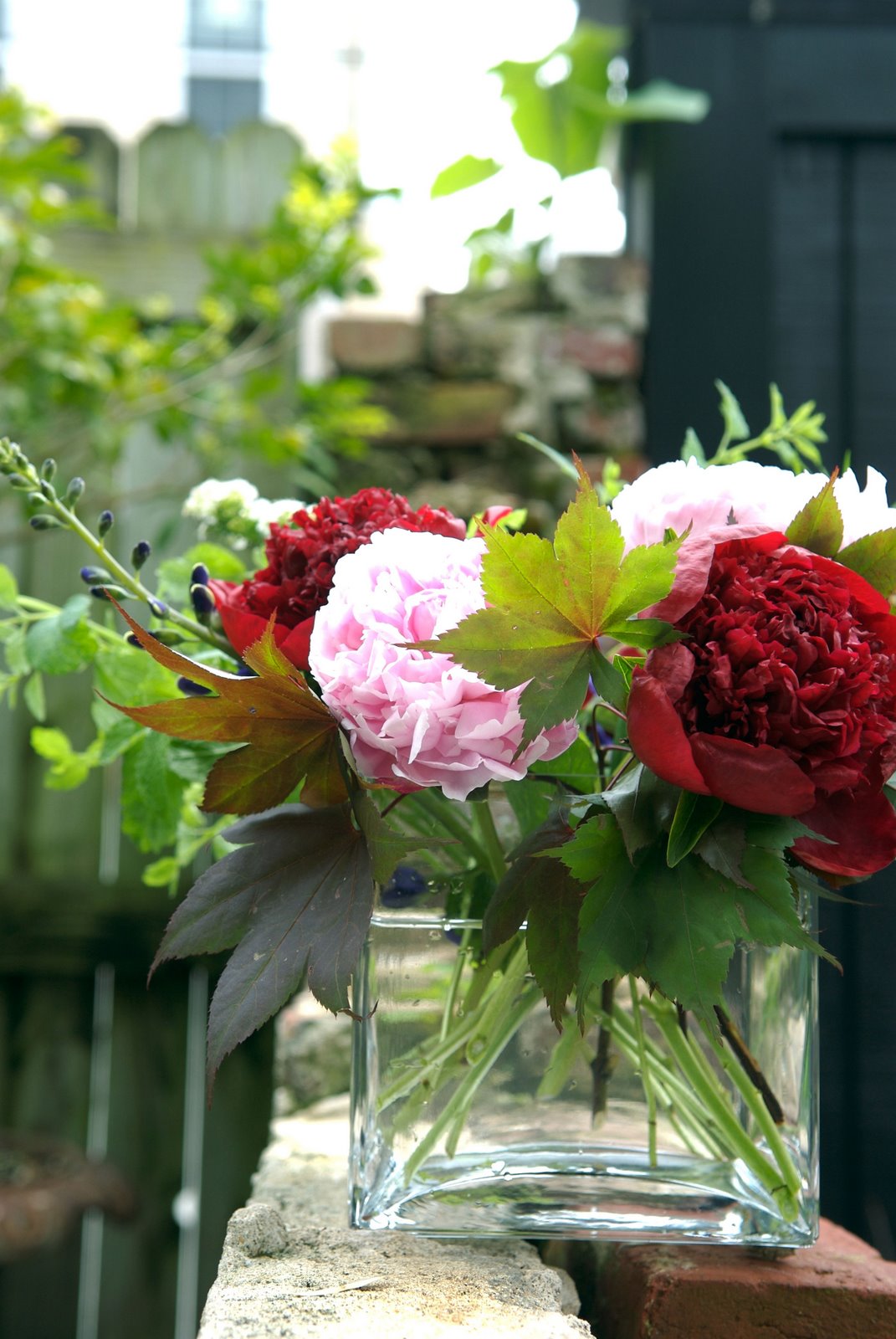 Aimee Dominic, an event planner, Jay Premack, a photographer and I have had many conversations about events, waste and our individual commitments to conducting our lives and businesses in the most sustainable manner possible. We have discussed how conscious decisions in entertaining usually result in a more luxurious event- think just picked local peonies and a menu designed around produce in season from small local farms. For me the pleasure of the party is enhanced by incorporating the best elements available combined with the knowledge that you are working in concert with our earth.
Aimee Dominic, an event planner, Jay Premack, a photographer and I have had many conversations about events, waste and our individual commitments to conducting our lives and businesses in the most sustainable manner possible. We have discussed how conscious decisions in entertaining usually result in a more luxurious event- think just picked local peonies and a menu designed around produce in season from small local farms. For me the pleasure of the party is enhanced by incorporating the best elements available combined with the knowledge that you are working in concert with our earth.
Aimee, Jay and I work individually in this manner every day. In my case with flower arrangements I use local flowers, many grown in my own city garden, whenever possible. When I cannot use local flowers I find sources that grow exceptional flowers sustainably and have outstanding labor practices. With food I focus on both origin and taste of ingredients.
Recently Aimee, Jay and I had the opportunity to work with a couple on their wedding who felt as strongly as we do about having a celebration that was as environmentally conscious as possible.
Care was taken to reduce consumption and waste that is usually synonymous with traditional entertaining- some of the details included……
-electronic save the dates to reduce paper use
-invites printed on recycled paper with soy based ink saving --trees saved and reduction of ink toxins used
-no escort cards or favors were used and the couple used the saved money to donate to organizations supporting reforestation and conservation
-flowers were local many were home grown and native reducing transportation miles and supporting biodiversity
-all flower vases were returned to be reused
-buses were used to transport guests which cut down on emissions
-the bride and groom traveled in via Eco-Limo, a company that uses both hybrid and bio diesel vehicles
-local products such as beeswax candles, locally brewed beer, local cheese, Sticky Fingers vegan wedding cake were used which cuts down on transportation costs and supports local businesses
-3Citron, catered using locally grown and organic produce with a menu that was primarily vegetarian, care was taken to recycle after the event
-music was provided by MyDeejay a locally based DJ service with environmentally conscious practices
-lighting by Frost Lighting, a company that operates in an environmentally conscious manner
-carbon credits were purchased through the Carbon Fund to offset guests transportation and hotel stays
Similar small conscious steps can be taken daily in different aspects of our lives.
Planting with my friend Allison and her family-
 I plant container gardens and small city gardens. In most of these gardens we incorporate herbs into the plantings. Often there are some vegetable plants, fruit trees and this year we did a decent sized plot of corn close to a beautiful swimming pool.
I plant container gardens and small city gardens. In most of these gardens we incorporate herbs into the plantings. Often there are some vegetable plants, fruit trees and this year we did a decent sized plot of corn close to a beautiful swimming pool.
I use a huge variety of plants in gardens all over the city but I get really excited when I plant something that is both beautiful and useful. Nothing satisfies like harvesting something from your own garden to eat.
(In a recent article Michael Pollan articulates the intense benefits of planting a productive garden.)
My own city garden is a densely planted space and everything in it is usable. I harvest thousands of stems for my flower business and grow fruit, vegetables and herbs for both business and personal consumption. Since I do live in the city my productive garden is central to our home, we work, dine, play, relax and reap the fruits of the garden. This practice of gardening brings us pleasure. Recently we started worm composting which takes up very little space, produces a large amount of fertilizer and is tended to by my 9 year old daughter.
All of the gardens I plant are in spaces that are limited in size and need to be used for many purposes. They also need to be aesthetically pleasing. It seems that every year in each of the gardens I plant we use more space for producing plants and less for plants that are purely ornamental. I guess others besides me are finding pleasure and beauty in the practice of productive city gardening.
In my friend Allison’s garden we have taken it to a new level. Allison lives in a beautiful row house with her husband, two year old and teenager. They have a brick patio that is very much part of their home. The family uses the space to eat, read, relax and play. Since there is no place to plant in the ground last year we set up lots of pots and plants. Immediately the space became warmer, more welcoming. This winter Allison started asking me about how they could farm in their charming urban garden…. We located and ordered planters that fit in available sunny spots making sure to leave enough room to enjoy the patio. We talked about what the family would actually like to eat and out of those desires what was actually possible to grow in the space. We got a worm farm started so they could compost and use the fertilizer for their new crops. We coordinated schedules so everyone would be there on a day that the moon was in a beneficial place to plant….then we planted.
They have all taken a part in planting, caring, watering and composting. Already herbs have been harvested, lettuces are nearly ready to be eaten, tiny figs and tomatoes are ripening. Sustaining this garden is now part of the families play, practice and pleasure.
A month without Whole Foods...
As we left the farmers market today my daughter said- lets see if we can not go to Whole Foods for a month. Our nearly daily trips to Whole Foods do slow down somewhat during the summer months when we are producing more in our own garden, getting food from our CSA share and we have farmers market that we can get food from almost everyday of the week. However, even during the summer months we do go to Whole Foods at least a few times a week to buy nuts, cleaning products, spelt flour, west coast cherries, brown rice sushi as an after school snack, sea salt, flax seeds……
Without hesitation I answered yes. Now I am considering why I immediately embraced the idea. I am attracted to the idea that food purchases will be thought about. Most items will require a visit to an individual store. Therefore just for the sake of convenience anything that can be gotten at the farmers market will be. For example I adore cherries but they will be in season locally quite soon, In the meantime I can eat local strawberries and apples that are plentiful and flavorful at this moment. Although I do eat primarily local when possible I will cut out all fruits and vegetables that are not immediately available at local markets.
Another motivation is variety. We eat a large variety of beans, grains, nuts and seeds. Generally we purchase them at Whole Foods. I always mean to stop at the many Ethiopian markets in my neighborhood to pick up yellow lentils, teff flour and other ingredients but I usually grab them at Whole Foods for the sake of one stop shopping. Going to small markets we will try something new.
I like supporting my small neighborhood stores. I know that at a new store within easy walking distance carries the same ecologically friendly cleaning products that I usually purchase at Whole Foods. When I buy detergent at the small store I will ask the people working there about the products. We will have the opportunity to learn why the product we choose is different from a similar main stream product. I am interested in this information and would like to know instead of just buying something and assuming that it is good just because Whole Foods decided to carry it.
Inevitably frequent visits to small shops in my neighborhood will strengthen bonds with the people in my community. We will share information an inevitably learn more about the products that we use, the food that we ingest and the individuals that live and work near our home.
We have not made “rules” about where we will shop. We are busy and need to eat the best food we can. The gathering of food and other products we use needs to work for us in our lives. Instead this pause will hopefully just bring another layer of consciousness to decisions about what we are eating and buying.
I will make note of where we find various items and what unfolds.
CSA, First Share of the Season
 CSA-Community Sustainable Agriculture…not a sexy name but provides pleasure--
CSA-Community Sustainable Agriculture…not a sexy name but provides pleasure--
You buy a share on a farm and regularly receive a portion of what is grown each week during the growing season. You help a small farm by insuring financial support for a season and you enjoy the benefits of what is produced. A connection is made between the growers and members. You become invested in how things grow…the story of deer eating all the kohlrabi hits close to home since you go home with no kohlrabi and the person who planted the kohlrabi is the one telling you the story…
This first week the share was small- a little bit of a few different types of greens, some green garlic, a pint of the most delicious strawberries, a basil plant and two tomato plants. Certain times during the season there are unlimited amounts of specific vegetables available. In both instances my excitement is immense.
I like the uncertainty of the share. Last summer was dry and the eggplant did very well at both the CSA and in my own garden. Luckily we love eggplant and we ate it for most meals, shared it with friends and got creative so as not to get bored by eating the same dishes day after day. I recently finished off the hot sauce that I made last September from an abundance of hot peppers.
I look forward to both the bounty and surprises that "my" farm will offer up this season.
To find out more information about CSA's and where to find one near you go to CSA .
My CSA is Clagett Farm.

